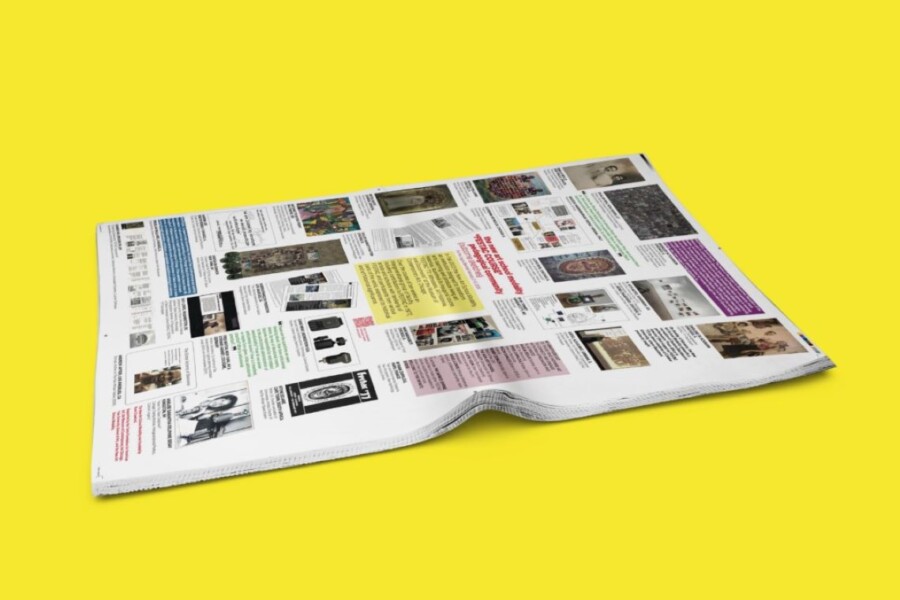Students from the New Art School Modality “festac course” share a 25-minute film documenting their research and artistic responses to studying FESTAC 77’, the Second World Black and African Festival of Arts and Culture, which took place in Lagos, Nigeria, in 1977. A discussion follows the screening.
CART captioning is available for this event.
About the Course
In the fall of 2023, the New Art School Modality, founded by Romi Crawford, launched at the MCA with a 10-week course, FESTAC ’77: Witnesses, Art Histories, and Documents. The faculty included FESTAC ’77 participants as well as artists, art historians, and authors of key texts and art histories on FESTAC, as well as those with expertise and knowledge in relevant areas. Course outcomes were featured at the 2024 Lagos Biennial in February.
Participants of the fall 2023 session of the New Art School Modality who contributed video sketches of their projects to the film include Haerim Lee, Ekalan Hou, Spencer Hutchinson, Myriam Zarhloul, Karen Francois Predestin, Learenna Reynolds, Lloyd Rice Jr, Douglas Williams, Antoinette Myers Perry, Emilia Mello, Chaski No, Analise Samantha Delphine Sesay, Chris Wray, Ryan Tenney, Taylor Harriett Payton, and Petra Matić.
The faculty included Darlene Blackburn, Romi Crawford, Fred Moten, Stefano Harney, Ntone Edjabe/Chimurenga, Gerald Williams, Mackda Ghebremariam Tesfau’, Haki Madhubuti, Dindga McCannon, Abdul Alkalimat, K. Kofi Moyo, Roy Lewis, and Andrew Apter.
About the School
The New Art School Modality explores and brings to life new forms of teaching, learning, art production, and impact. The school is grounded in an ethos of collaboration, experimentation, and improvisation. The New Art School Modality offers a revised version of the art school model, methods, and procedures. It is conceived as a different take on, or an alternative approach to, art school education, one that has fewer guard rails and institutional protocols. There’s intentionally less handholding and the apparatus is reduced, all of this as a nod to prior historical moments when making art and being an artist were less reliant on costly infrastructures. Courses are hybrid, online and in-person. Unlike place-based art schools, it is decentralized, taking up different “perches.”
Official Website
More events on this date
Tags: Abdul Alkalimat, Analise Samantha Delphine Sesay, Andrew Apter, Antoinette Myers Perry, Chaski No, Chris Wray, Darlene Blackburn, Dindga McCannon, Douglas Williams, Ekalan Hou, Emilia Mello, Fred Moten, Gerald Williams, Haerim Lee, Haki Madhubuti, K. Kofi Moyo, Karen Francois Predestin, Learenna Reynolds, Lloyd Rice Jr, Mackda Ghebremariam Tesfau’, Museum of Contemporary Art Chicago, Myriam Zarhloul, Ntone Edjabe/Chimurenga, Petra Matić, Romi Crawford, Roy Lewis, Ryan Tenney, Screening and Talk | The Project of Togetherness with the New Art School Modality, Spencer Hutchinson, Stefano Harney, Taylor Harriett Payton, The Project of Togetherness with the New Art School Modality

« previous event
next event »